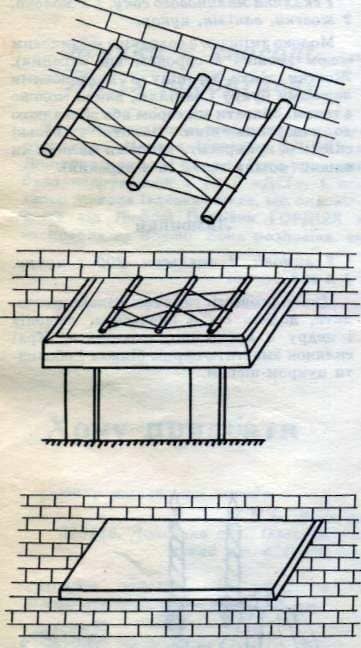
As a rule, in the cellars and cellars the shelves are made of boards. Therefore, sometimes you hear: “I did not finish, the rotten shelf, and all cans with canning” went “to the ground …”
I propose to make shelves of reinforced concrete. This is not difficult at all. First of all, you need to prepare bars from the reinforcement with a diameter of 10-15 mm and a length of 350 (if the walls of your cellar are brick) or 500 mm (if earthen). Next, we hold a horizontal line on the wall at the desired height. If the wall is brick, drill holes along this line at a distance of 300-350 mm with a depth of 150 mm and a diameter 1-2 mm smaller than the diameter of the harvested rods. (In this case, the clogged bars will be firmly held in the wall). In the earthen wall, the rods are hammered without previous holes drilling to a depth of 300 mm. In both cases, the bars will protrude 200 mm from the wall. Take the wire and wrap the bars, as shown in the picture. Under the wrapped rods we put the formwork (see fig.) And fill them with concrete mix. We seal and align. Densely sprinkle with cement and again iron with a trowel. After that the surface of the shelf will be strong and smooth. After 3-4 days we remove the formwork. Strong and reliable shelf ready. It will serve you and your children. If desired, the shelf is tiled with tiles.
Устройство ульев. Пчеловодный инвентарь.
Useful tips for the amateur beekeeper